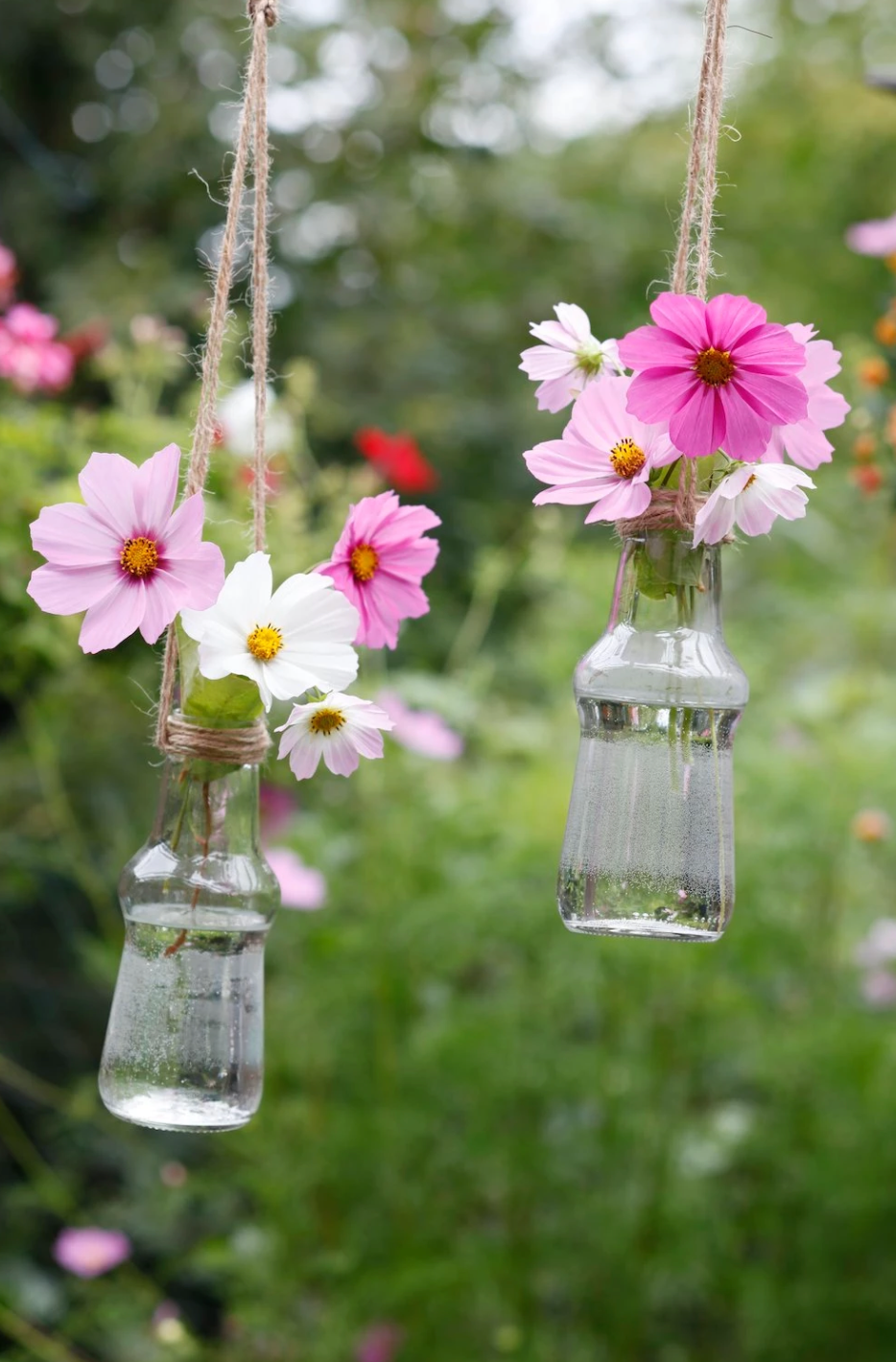COPIOUS COSMOS | Make your summertime garden sing
If you're looking for flowers that will bring you joy all summer long, are easy to grow and turn your garden into a sea of blooms, it’s time to take a closer look at cosmos.

Cosmos are the perfect flower for beginners, they're easy to grow and look after. They bloom in abundance from May (if they've had time to germinate indoors beforehand) through to October, are heavenly as cut flowers and, in a nutshell, just make me oh so very happy.
Just a little bit of their story: cosmos found their way to our shores around 200 years ago, all the way from South America. Their name derives from the Greek word for harmony and, in the language of flowers, they're a symbol of love and innocence. How's that for heritage!
The flowers look like giant daisies and the feathered leaves are so delicate, they remind me a little bit of dill. For me, they're the perfect example of a summer flower.

Depending on the variety, cosmos can grow to between 30cm (12") all the way up to 2m (6'5ft) tall. Whether they produce single, semi-double or double flowers – they're pure joy, flowering continuously all summer long. And you can get them in any color imaginable, from white to blush, pink, burgundy, purple and even two-toned varieties.
These annual plants are totally undemanding – which is hard to believe given how ferociously they blossom. It really all just comes down to soil and location.
Full sun is best but you can go for partial shade at a pinch – they just won't flower quite as abundantly. It's best not to fertilize them (fertilizing will cause the leaves to grow rather than the flowers). They're fine with short dry spells but you'll need to water them regularly if you keep them in pots.
There's only one care tip I'd really recommend you follow (for purely selfish reasons, because it will lead to more flowers!): cut them. The more you deadhead them (or cut fresh flowers for your vases) the more they'll thank you by producing new flowers.

The How
It's just as easy to grow cosmos as it is to care for them. You can either grow them inside for about a month before planting the seedlings outside, or sow them directly in your flowerbed after the last (night) frost has been and gone.
Cosmos are pretty good germinators, which means that if you're growing them in small pots, you'll really only need to plant one seed per pot (preferably in seedling compost). I always try to avoid pricking out because I hate the thought of having to throw away any tiny baby plants.
About a week later, their little green heads will start to poke their way through the soil and no more than three months after first sowing them, you'll have lots of gorgeous cosmos.

Make sure to place them somewhere bright, otherwise, their stems will grow long and crooked.
If that happens, don't despair though – you can rescue them: place the seedling, roots 'n all, deeply into a new pot and completely fill up with soil so there's only a bit of stem and leaves peeking out the top.
When planting, you should make sure there's a distance of 30cm to 40cm (12” to 16”) between each plant; it'll allow them to grow nice and bushy with lush flowers. Try planting in groups of three – I just think little clusters looks nicer than lonesome plants dotted around.
And there's really only one part of growing cosmos that's particularly labor-intensive: the young plants are extremely appealing to greedy slugs and snails so you'll need to keep your seedlings protected early on.
I plant them in large pots and then place those straight in the flowerbed, which has the advantage that you can coat the pots with slug/snail deterrent (like Schnexagon).
At a Pinch(ing out)
Nothing quite encourages your plants to get more productive than pinching out. And here's how that works: once your young plants are about 20cm to 30cm (8” to 12”) tall, you need to shorten the shoot tips by about a third. It may look counterproductive (and a little bit cruel) to cut off new growth you've so tenderly nourished but it will cause them to form more shoots and they'll get bushier.

House Beautiful
No cutting flower garden or flower bed is complete without cosmos. They add a touch of romance to any bouquet, whether on their own or as part of an arrangement. If you cut them before the flowers have fully opened up they'll last in a vase for almost a week.

Gaps Be Gone
Cosmos are also a great way to fill gaps in your flowerbeds, remedy a 'bald' spot or just dotted around in pots to bring a little summer and color to your garden (and life).

And, if you're lucky, they'll self-seed so that you'll keep stumbling across them year after year in different locations.
All my love from the Cottage Garden & happy planting!
Sarah
Photos: Janina Laszlo, Flora Press/Caroline Bureck (second to last), Flora Press/Kubacsi (last) und My Cottage Garden

































Comments